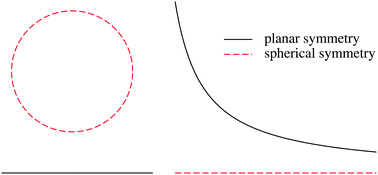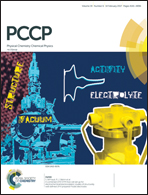The effect of electrostatic boundaries in molecular simulations: symmetry matters
Abstract
Artifacts arise when the long-ranged electrostatic interaction is inappropriately treated in molecular simulations of electrolytes. When the usual Ewald3D sum method with the tinfoil boundary condition (e3dtf) is used for simulations of an interfacial liquid under an external electric field, a straightforward analysis of the liquid structure often suggests unphysical dielectric properties as a consequence of the inaccurate treatment of the electrostatics. In order to understand the underlying mechanism that leads to this apparent violation of thermodynamics, we now derive a new equation in the weak-field limit that, in a mean field view, accounts for the average effect arising from the difference between e3dtf and the sophisticated Ewald2D sum method (e2d). Numerical simulations of a water system in slab geometry confirm the validity of the weak-field limit equation for a series of parameter setup associated with e3dtf. Moreover, a similar procedure applied to a spherically confined water system suggests that corrections to the seemingly inappropriate treatment of the electrostatics in fact vanish. This cancellation of the boundary effect due to symmetry immediately sheds light on the long-lasting problem of the validity of the ad hoc application of e3dtf for bulk systems. In total, we argue that artifacts arising from e3dtf are often predictable and analytical corrections to the straightforward analysis might be applied to reveal consistent thermodynamic properties in liquid simulations.



 Please wait while we load your content...
Please wait while we load your content...